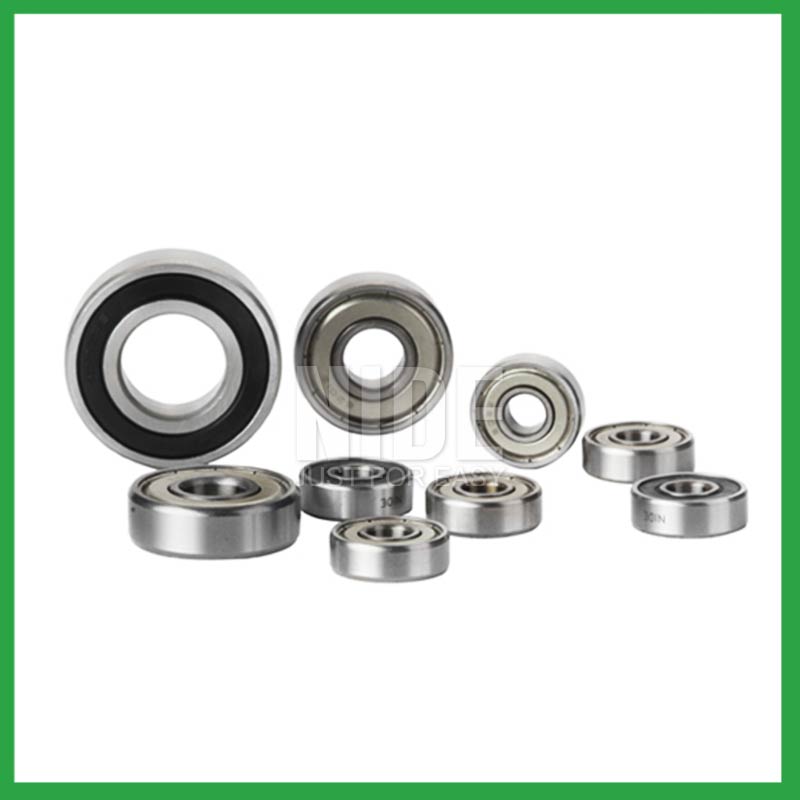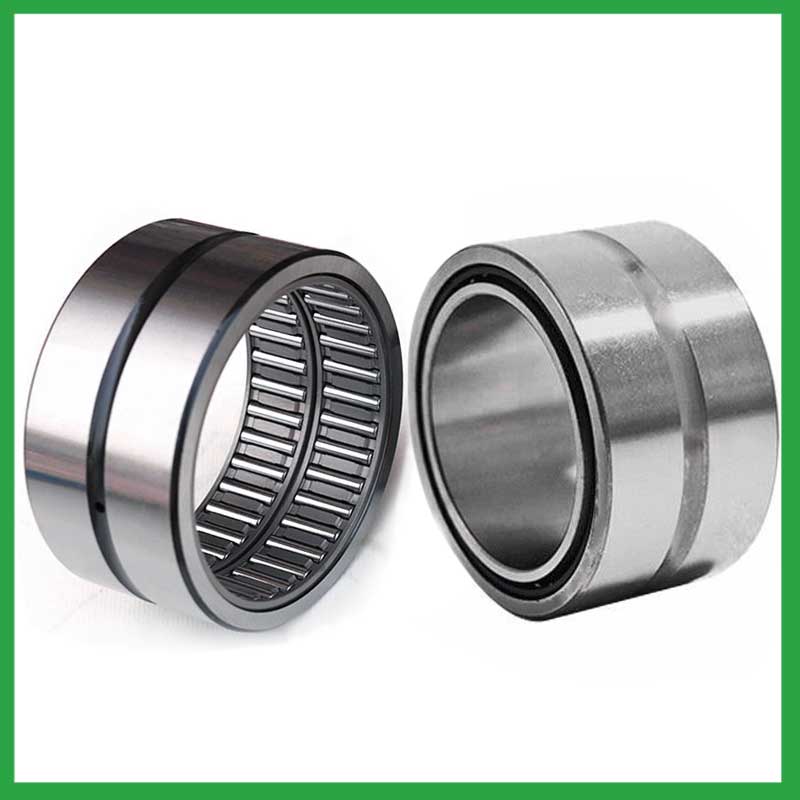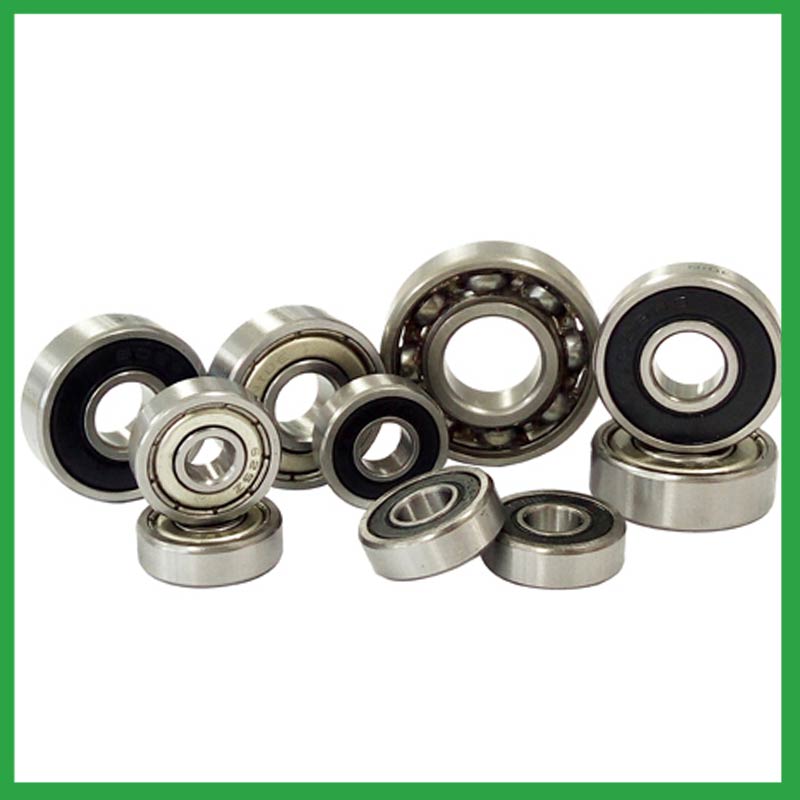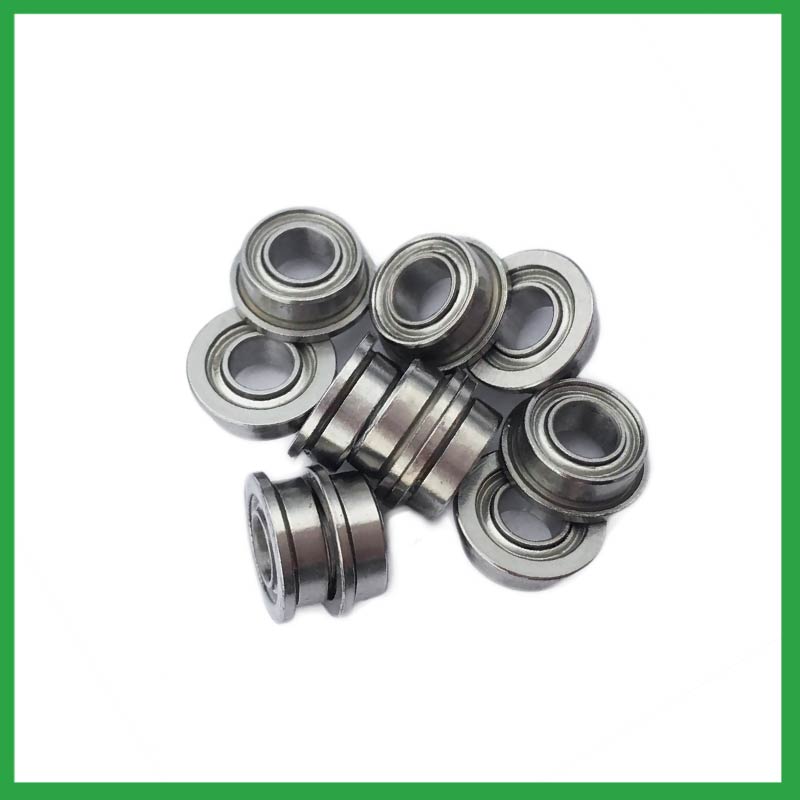PRODUCTS
CONTACT US
Ningbo Nide International Co., Ltd.
一一
· Contact person:Jack Zeng
· Mob/Whatspp/WeChat:0086-13738869026
· Email:emarketing@nide-group.com;marketing4@nide-group.com
· Add:No. 169, Wohushan Road, Daqi Subdistrict, Beilun District, Ningbo, China

Nide team could manufacture ball bearing as per customer’s drawing and samples.
If customer only has samples, we could also design drawing fo r our customer.
We also provide customized service.
Our ball bearing is widely applied the different industrials.
Ningbo Haishu Nide International Co., Ltd produces and supplies ball bearings.We have professional technical manpower for the mixing of polymer raw materials for the insulation coating of bearings, production of products, and quality control. We will grow together with customers with accurate quality, fast delivery and competitive prices.
In years of practice, we have established a strict quality assurance system. Our product range covers motor cover and lamination,commutator,ball bearing,insulation paper,shaft,fan,thermal protector, etc. They are widely used in fields such as single and three phase induction motor,fan motor,compress motor,electric automotive motor,BLDC motor,washing machine motor,air condition motor,electric bicycle motor. We can produce OEM products and make the following drawings. Our principle is to prioritize service and quality!

| Parameter | Information |
| Product Name | steel ball bearing spinner |
| Place of Origin | China |
| Brand Name | Nide |
| Material | ceramics, etc. |
| Type | Ball |
| Warranty | 3months-1year |
| Port | Ningbo/Shanghai |
| Application | food processing machinery, etc. |
| Size(mm) | customize |
| Color | white+customized |
| Precision Rating | as per customer's requirement |
| Certification | ISO 9001 Certification,CE-stator coil winding machine,CE-insulation paper inserting machine,etc |
| Feature | Good wear resistance,Low Noise...etc |
| Packaging Details | Suitable for sea transportation |
| Service | one-stop service |
| Model Number | ball bearing |
| Supply Ability | 100000-500000 Piece/Pieces per Month |
| Lead time (days) | 15-20 (To be negotiated) |
Please note: The above table data is for reference only. For specific information, please contact us.
The precision range of steel ball bearing spinner is from ABEC7 to ABEC9, with a particle size of 0.3 μ m. Among them, ABEC9's ball bearings have the best precision range and are widely used in the electronics industry, precision measurement industry, and so on.
Before use, the model, size, and design of the ball bearing should be confirmed to ensure suitable application;
During installation, the installation load of the ball bearing should be minimized as much as possible to avoid unnecessary damage;
The bearing shaft and the bearing frame should be stable at the same time to avoid excessive tension.
Ball bearings have many advantages, making them highly competitive in the market.
Firstly, they are very durable and have good wear performance, making their service life longer than many other types of bearings.
Secondly, they are easy to install and can provide low friction performance in various applications.
Thirdly, they require a relatively low level of maintenance, making them cost-effective.
In addition, compared to many other types of bearings, their purchase cost is relatively low, making them an economical choice.




steel ball bearing spinner---FAQs Guide
2.Are there miniature steel ball bearing spinner designed for use in precision instruments and small-scale mechanisms?
3.Are there self-aligning steel ball bearing spinner that accommodate misalignment and shaft deflection in rotating equipment?
4.Where can steel ball bearing spinner be used?
5.Are there steel ball bearing spinner designed for use in critical medical equipment?
6.How do cage designs affect steel ball bearing spinner speed and acceleration capabilities in high-speed machinery?
7.Do steel ball bearing spinner come in various tolerance classes?
8.How do preload adjustments in steel ball bearing spinner affect their performance and suitability for high-precision tasks?
9.What anti-corrosion coatings or treatments are available for steel ball bearing spinner used in marine or outdoor applications?
10.What are the considerations for selecting sealed or shielded steel ball bearing spinner to protect against contamination and retain lubrication?
11.Can steel ball bearing spinner operate in high-speed applications, and what design features make them suitable for such conditions?
12.What is the role of steel ball bearing spinner in reducing friction and wear in automotive applications, such as wheel hubs and transmissions?
13.How do cage materials and designs impact steel ball bearing spinner performance and stability?
14.How do steel ball bearing spinner contribute to the overall efficiency and energy savings in industrial machinery and transportation systems?
1.Are there hybrid steel ball bearing spinner that combine steel rings with ceramic balls to optimize performance in demanding applications?
Hybrid Ceramic steel ball bearing spinner. Ceramic ball bearings (also known as hybrid bearings) are the one component that'll easily optimize the performance of your application. Hybrid bearings have ceramic (silicon nitride, Si3N4) balls and 52100 bearing steel rings.
2.Are there miniature steel ball bearing spinner designed for use in precision instruments and small-scale mechanisms?
Miniature bearings, despite their small size, play a significant role in various industries and applications. These compact powerhouses, typically measuring less than one inch in outer diameter, offer exceptional precision, durability, and reliability. Miniature bearings find extensive use in precision instruments and robotics.
3.Are there self-aligning steel ball bearing spinner that accommodate misalignment and shaft deflection in rotating equipment?
These steel ball bearing spinner are particularly suitable for applications where misalignment can arise from errors in mounting or shaft deflection. A variety of designs are available with cylindrical and taper bores, with seals and adapter sleeves and extended inner rings.
4.Where can steel ball bearing spinner be used?
steel ball bearing spinner are very versatile. They can be designed to withstand radial loads, axial loads and combined radial/axial loads at various operating speeds. These characteristics, combined with the relative cost and compactness of the design, give it universal appeal within the industry. Ball bearings are widely used in electric motors, gear reducers and pumps. Serving the automotive, home appliances, aerospace, oil and gas drilling, and mining sectors.

5.Are there steel ball bearing spinner designed for use in critical medical equipment?
Precision steel ball bearing spinner are among critical components in medical devices that are vital to ensuring patient safety. Correct choice of suitable ball and ring materials and the right product design can ensure high-precision bearings — and medical devices — have a long service life.
Precision bearings are used in a wide variety of medical devices including surgical power tools, ventilators and heart pumps — and patient safety depends on them all. Whatever the device, there is an onus on medical device original equipment manufacturers (OEMs) to ensure that the right type of bearings are chosen, and fit precisely into the application.
6.How do cage designs affect steel ball bearing spinner speed and acceleration capabilities in high-speed machinery?
In high-speed steel ball bearing spinner, external load has a great effect on cage stability and sliding ratio, especially for the bearings at work in the starting process. The cage stability is worse in the beginning of the bearing starting process. The axial load greatly influences cage dynamic performance in the bearing starting process.
In addition, while ball bearings worked under steady conditions, axial load and radial load both have a great influence on cage dynamic performance. The effects of axial load on cage dynamic performance during the bearing starting process are opposite from the effects under steady conditions.
7.Do steel ball bearing spinner come in various tolerance classes?
Bearing tolerances are standardized by classifying bearings into the following six classes (accuracy in tolerances becomes higher in the order described): 0, 6X, 6, 5, 4 and 2.
8.How do preload adjustments in steel ball bearing spinner affect their performance and suitability for high-precision tasks?
Benefits of Preloading a Bearing
Optimizes the ball spin to roll ratio.
Increases the rigidity of an application.
Protects from excessive ball skidding.
Decreases application vibration and sliding friction.
High running accuracy (even if load conditions keep changing)
Increases bearing load capacity.

9.What anti-corrosion coatings or treatments are available for steel ball bearing spinner used in marine or outdoor applications?
Corrosion Resistant Coatings.Whether steel ball bearing spinner are manufactured from stainless steel or from chrome, anti-corrosion coatings can be applied. Compared to the natural state of the base metal, these coatings make surfaces less chemically reactive. In their selection of treatments or coatings, some industries choose to consult with the manufacturer of the bearings they use. This is because surface engineering is a highly specialized undertaking. These coatings used for their anti-corrosion properties to protect bearings in harsh environments include the following:Passivation (of stainless steel),Carbide and titanium nitride,Galvanized zinc,Nickel plating,Cadmium plating,TDC (thin dense chrome).
10.What are the considerations for selecting sealed or shielded steel ball bearing spinner to protect against contamination and retain lubrication?
First, the environment in which your steel ball bearing spinner operate in can help you identify potential contaminants, allowing you to select your shields or seals accordingly. For example, shielded bearings have a gap that can allow finer contaminants or water from washdown applications to enter the bearing and get into the raceways.The challenge for sealing bearings is to seal the bearing by protecting the bearing from contaminants and running efficiencies.
11.Can steel ball bearing spinner operate in high-speed applications, and what design features make them suitable for such conditions?
They have very low rolling friction and are optimized for low noise and low vibration. This makes them ideal for high-speed applications. steel ball bearing spinner are comparatively easy to install and require minimal maintenance.
12.What is the role of steel ball bearing spinner in reducing friction and wear in automotive applications, such as wheel hubs and transmissions?
When a load is applied to a ball bearing, the steel ball bearing spinner roll freely between the inner and outer rings. This rolling action significantly reduces friction compared to sliding contact, resulting in smoother rotation and reduced wear.

13.How do cage materials and designs impact steel ball bearing spinner performance and stability?
As the core component of rotating machinery, the performance and reliability of high-precision steel ball bearing spinner directly affect the overall performance and life of the machine and instrument . The increase of the rotational speed will aggravate the collision and friction of the cage, which will lead to the decrease of the rotational stability of the cage. The unstable movement of the cage could in turn lead to more severe collision and wear, thus reducing the life and reliability or even the destruction of the bearing.
Therefore, it is very necessary to study the cage stability to guarantee the stable operation of bearings. However, the dynamic characteristics of the cage is very complex. Parameters such as load, rotational speed and lubrication may affect its kinematic and tribological conditions, which leads to the change of its motion behavior.
14.How do steel ball bearing spinner contribute to the overall efficiency and energy savings in industrial machinery and transportation systems?
The balls roll along the raceway, allowing for smooth rotation of the machinery or equipment. Ball bearings are used to support rotating, reduce friction and support radial and axial loads in high-load, high-speed applications where reliability and efficiency are critical.

